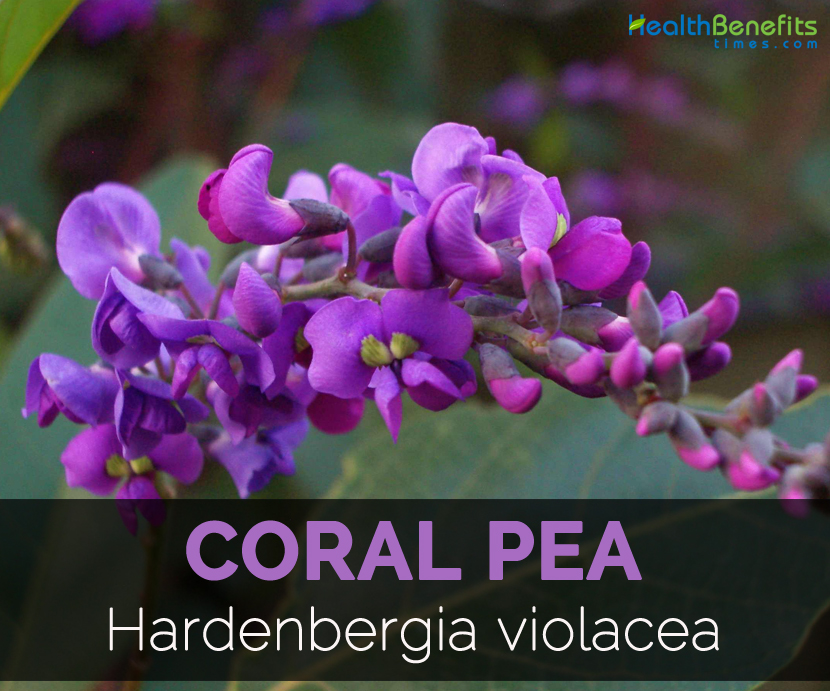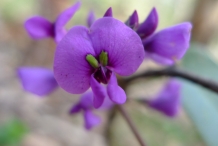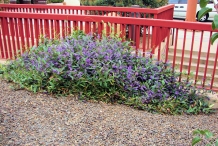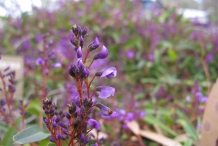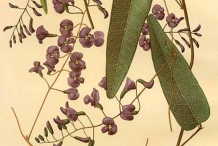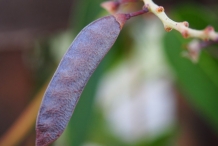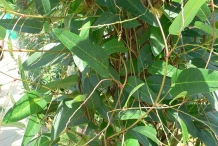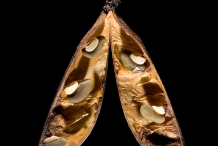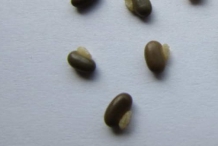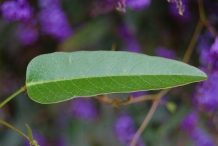| Coral Pea Quick Facts |
| Name: |
Coral Pea |
| Scientific Name: |
Hardenbergia violacea |
| Origin |
It is native to Australia, growing in areas from Queensland to Tasmania. |
| Colors |
Dark brown to black (Pod) |
| Shapes |
Flattened oblong, 35 to 50 mm long (Pod) |
| Flesh colors |
Olive green to brown (Seeds) |
Coral pea is also known as Climbing Morning Glory, Happy Wanderer, False Sarsaparilla, Native Lilac, Purple Coral Pea, Purple Coral, Native Sarsaparilla, Purple Twining Pea, Native Woodrose, Sarsaparilla, Waraburra, Lilac vine, Vine lilac and Wild sarsaparilla. It is a flowering plant species belonging to the pea family Fabaceae. It is native to Australia from Queensland to Tasmania. The plant is a vigorous evergreen climber growing as subshrub bearing typical pea like flowers usually violet, pink and white. Leaves are hard, dark green and leathery with prominent venation. It is a widespread species which is found in many habitats.
Coral pea is an evergreen, glabrous, climbing or prostate subshrub with woody and slender stem that grows 2 meters long. Leaves are ovate-narrow-lanceolate, simple measuring 3 to 10 cm by 1 to 5 cm wide, glabrous, dark green above and grey green beneath. It is leathery with entire margin, mucronate tip and base rounded to indented. Petioles are 0.5 to 3 cm long and stipels are 1 to 2 mm long. An axillary inflorescence with 20 to 30 violet or reddish flowers. Calyx is 3 to 4 mm long having two dorsal sepals. Corolla measures 8 mm long. Flowers are followed by flattened and oblong pods which measures 35 to 50 mm long, is glabrous and dark brown to black. Each pod contains 4 to 8 seeds which are reinform, olive green to brown, strophiolate measuring 2.5 to 3 mm.
How to Eat
- Boil the leaves and use it to prepare sweet and pleasant beverage.
- Flowers are also consumed.
Precautions
- Allergic people should avoid it.
- Consume it in moderate amounts.
References:
https://www.itis.gov/servlet/SingleRpt/SingleRpt?search_topic=TSN&search_value=820378#null
https://www.gardeningknowhow.com/ornamental/vines/coral-pea-vine/coral-pea-plant-care.htm
https://en.wikipedia.org/wiki/Hardenbergia_violacea
https://www.horticultureunlimited.com/plant-guide/purple-coral-pea/
Comments
comments


